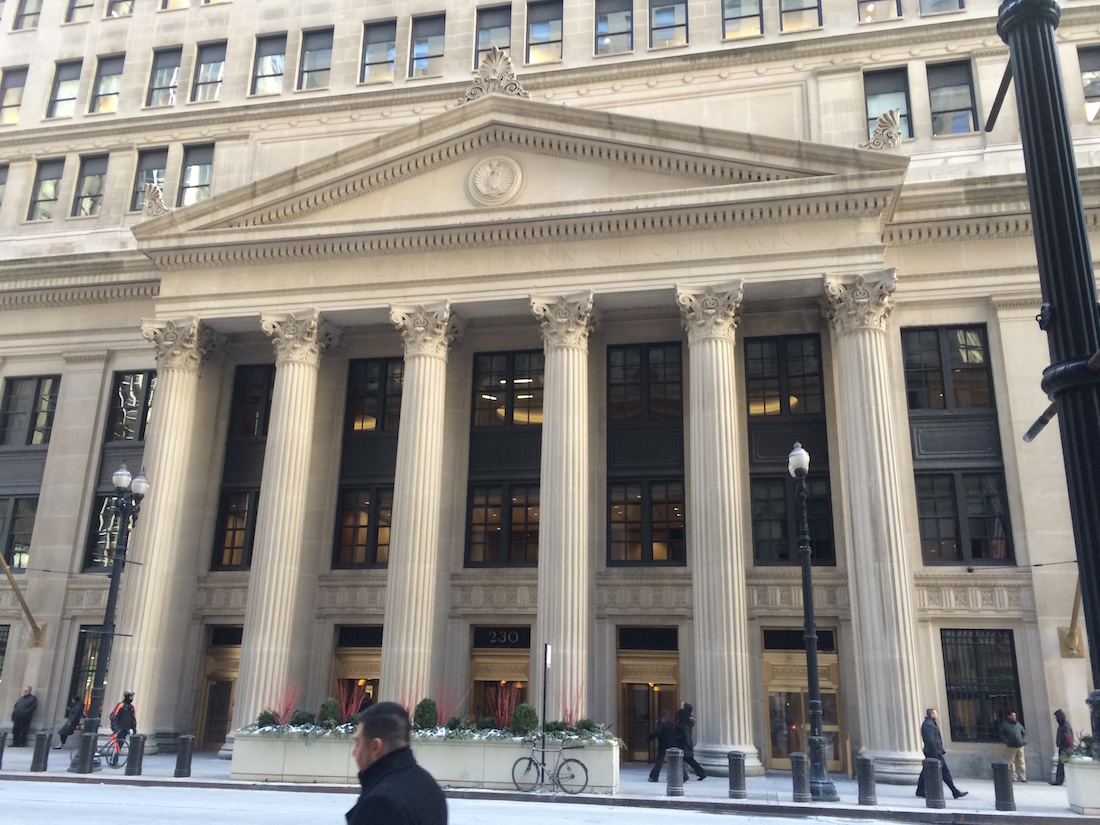By: Katie Murar
It’s the beginning of March, and that means more than nice weather is on the way. It’s almost time for the Federal Reserve to decide whether or not to raise interest rates. For America’s banks, the decision will play a big role in near-term profits.
On the 15th and 16th of this month, the Federal Open Market Committee will meet for the second time this year. On the agenda is the decision on whether or not to raise rates for a second time since December, when the Fed raised interest rates for the first time in seven years.
When the economy is in trouble, the Fed lowers interest rates to encourage borrowing and spending; when the economy gets too heated, the Fed will similarly lower the benchmark rate to cool off inflationary pressures.
As the U.S. economy crashed in 2008, the Fed brought interest rates to super-low levels—about one quarter of a percent—and held them there for years. Finally, after signs of solid economic growth, the Fed raised rates by 25 basis points in December last year, to 0.5 percent.
In a press conference following this decision, Federal Reserve Chair Janet Yellen said “the median projection for the federal funds rate rises gradually to nearly 1½ percent in late 2016” with four upticks spaced out over the course of the year.
Effective Federal Funds Rate Over Two Decades
[field name=”chart”]
Now, because of stock market turmoil and falling oil prices inciting uncertainty for the U.S. economy, even one hike is in question for 2016.
“I’d be very surprised if the Fed does anything in March, bank analysts have all been wrong assuming rates would go higher in the past so now we’re just assuming nothing will happen this year,” said John Rodis, senior vice president and research analyst for Fig Partners, an organization that specializes in equity research.
BMO Capital Markets Chief Economist Douglas Porter said in a recent online note that he is rethinking an previous estimate the Fed would be hiking rates quarter-per-quarter in 2016, claiming an increase in “negative risks” will make fewer hikes more likely.
“These risks are now being realized; so, we suspect the Fed will pause earlier and more often,” Porter wrote. “We now look for a semi-annual rate-hike cadence this year, beginning in June, presuming U.S. economic indicators point to a return to above-potential growth, continuing job market improvements and budding inflation pressures, by this spring. Next year should see a return to a quarterly rate-hike clip.”
The decision to change interest affects the entire U.S. economy—particularly financial holding institutions.
For banks, it involves what is known as the “net interest margin,” which is the difference between what banks pay to acquire funds from depositors, and what they receive when they lend that money out to borrowers. As that margin widens, bank profits grow.
“Interest rates are obviously very important because if you think about the very nature of banking, banks basically make loans and take in deposits,” Rodis said. “A lot of banks are asset sensitive, so that means their interest earning assets or loans will re-price faster than your deposits. So if rates go up, banks should make more money.”
When interest rates rose for the first time in seven years in December, Rodis said banks were able to earn a bit more money but typically didn’t see a big change. Now, looking forward to March, banks aren’t holding their breath for a rate increase.
“Some are assuming the Fed raises once or twice, but banks are really assuming the worst and hoping for the best,” Rodis said. “The bottom line is nobody knows, and certainly given how the stock market has been acting the past couple of months that motto has been well-served.”
Benjamin Iverson, a banking and personal finance professor at Kellogg School of Business, said investors and bank officials are anticipating that the Fed will not raise rates in March.
“If the FOMC doesn’t raise rates, not much will happen on that day,” Iverson said. “In fact, there would likely be a much greater market upheaval if they did raise rates, since that would be a major surprise.”
The year 2016 kicked off with U.S. stocks posting the worst four-day starts to a year ever, with the Dow Jones Industrial Average and the S&P 500 badly hurt. February did see gains across the board, but this was all but erased on the final day of the month due to late-day selling. However, Tuesday saw across-the-board gains, with the Dow surging 349 points, or 2.1 percent, for its second best day of the year.
While the stock market is an indication of the overall attitudes and health of the American economy, the inherent volatility in stock prices make it an inconsistent indicator at best, Rodis said.
Another signal that the Fed might hold off on a March increase came Tuesday when New York Federal Reserve President William Dudley said he felt “less confident” than he did last year.
“At this moment, I judge that the balance of risks to my growth and inflation outlooks may be starting to tilt slightly to the downside,” Dudley said at a conference in Hangzhou, China.
Whether or not a rate increase comes this month, or even this year, banks aren’t holding their breath. But consumers may be negatively affected, Iverson said.
“By leaving rates where they are, the Fed allows the US economy to continue to grow at a quick clip, and the weakness in the world economy will probably prevent inflation from being a major concern,” Iverson said. “On the flip side, if the Fed leaves rates alone, as I expect, that is bad news for savers because they will continue to receive very low rates on their savings accounts, forcing them to find alternative places to invest.”

